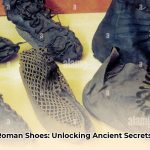Forget the stereotype of ancient Greeks in flowing white robes, perfectly coiffed, and seemingly oblivious to the elements. While philosophical discourse and athletic prowess were undeniable hallmarks of their civilization, daily life under the Mediterranean sun, coupled with social customs and military necessities, meant that head coverings were far more than a mere afterthought. From the practical hats that shielded farmers and travelers, like the versatile petasos and the humble pileus, to the symbolic styles such as the distinctive Phrygian cap and the authoritative kausia, ancient Greek headwear was surprisingly diverse and deeply intertwined with their culture, status, and profession. More on the ancient greek war helmets can be researched here. This exploration will delve into the rich tapestry of ancient Greek headwear, revealing how these everyday objects offered insights into their society, economy, and evolving warfare tactics.
Unveiling Ancient Greek Headwear: A Spectrum of Style and Utility
The archaeological record, alongside artistic depictions on pottery, frescoes, and sculptures, consistently demonstrates a widespread and varied use of head coverings across ancient Greek societies—from the early Minoan and Mycenaean periods to the Classical and Hellenistic eras. These items served a multitude of purposes, ranging from essential protection against the elements to powerful markers of social standing, profession, or even national identity.
The Everyday Essentials: Practical Hats for Work and Travel
For the majority of ancient Greeks whose lives revolved around labor or movement, practical hats were indispensable. These designs prioritized function, offering protection and comfort through simple, durable construction.
The Petasos: The Quintessential All-Weather Companion
Often envisioned as the go-to hat for those spending their days outdoors, the petasos was a wide-brimmed hat designed to offer comprehensive protection from both the glaring sun and the occasional rain shower. Typically crafted from readily available materials such as wool, felt, leather, straw, or even animal skins, its robust construction made it ideal for farmers tending their fields, shepherds watching their flocks, and travelers embarking on long journeys. A crucial feature was its chin strap, which ensured the hat remained securely in place, even in windy conditions or during vigorous activity like horseback riding. This practicality made the petasos a favored choice among cavalry, particularly in Athens, and its depiction on noble riders in pottery underscores its association with the aristocracy when mounted. Originating perhaps in Thessaly, its utility quickly led to widespread adoption across the ancient Greek world and beyond, influencing headwear styles among the Etruscans of Italy and the Thracians to the north. Interestingly, even the Olympian gods recognized its value; Hermes, the agile messenger of the gods, is frequently depicted wearing a petasos, often winged, symbolizing swift movement and an outdoor existence.
The Pileus (Pilos Hat): Simplicity and Durability
In stark contrast to the wide-brimmed petasos, the pileus (sometimes referred to as the pilos) was a brimless, conical hat. Its primary appeal lay in its simplicity and affordability, making it a ubiquitous accessory for ancient Greek workmen, sailors, and foot soldiers throughout the Archaic and Classical periods, with continued use into the Hellenistic era. Predominantly made from felt, a dense and durable material, the pileus offered basic head protection and warmth without hindering vision or movement. Its practical design also resonated with neighboring civilizations, being adopted by the Romans, Illyrians, and Etruscans. A testament to its functional excellence, the pileus even inspired a specific type of military headwear: the pilos helmet. Around the 5th century BCE, a bronze version of the pileus hat emerged, offering a lightweight yet protective alternative to more ornate helmets. While it might have lacked the elaborate design of other Greek helmets, its ease of production and unobstructed field of vision made it a popular and cost-effective choice for many hoplites, reinforcing the idea that utility often triumphed over elaborate aesthetics in practical wear.
Headwear as Identity: Symbolism and Status
Beyond mere functionality, certain types of headwear conveyed powerful social, cultural, or even political messages, distinguishing individuals or groups.
The Phrygian Cap: From Foreigner to Symbol of Freedom
The Phrygian cap, a soft, conical cap characterized by its apex bending forward, boasts a remarkably dynamic history of symbolism. Originating in Phrygia (modern-day Anatolia), its earliest known depictions come from the ancient city of Persepolis. To the ancient Greeks, this distinctive cap often signified “foreigners” or “barbarians” in their artwork, particularly on black and red figure pottery. It was associated with various non-Greek peoples, including the Persians, Dacians, Thracians, Medes, and Scythians, as well as mythological figures like the Amazons. However, the Phrygian cap‘s symbolism underwent a profound transformation in later societies. In the Roman context, a similar cap (also called pileus) became a potent emblem of liberty, worn by freed slaves to signify their release from bondage. This association with freedom paved the way for the Phrygian cap‘s explosive popularity during the Age of Enlightenment and, most notably, the French Revolution. It became synonymous with the ideals of liberty, equality, and brotherhood, famously adorning Marianne, the personification of the French Republic. Its enduring power as a symbol of defiance and liberation is still evident today, appearing in various revolutionary movements and national emblems, such as the Seal of the United States Senate.
The Kausia: Macedonian Authority and a Modern Legacy?
The kausia was a flat hat, uniquely favored by the ancient Macedonians, a powerful kingdom whose culture became deeply intertwined with that of the Greeks. Macedonian kings, like Philip V whose bronze head provides detailed visual evidence, were sometimes depicted wearing a more opulent version of the kausia, often in purple and encircled by a white diadem—a clear symbol of royalty and authority. This hat traveled extensively with Alexander the Great and his armies during their epic campaigns eastward into Asia. After Alexander’s death and the subsequent fragmentation of his empire, the kausia remained a popular choice not only in Macedon but also in the distant Greco-Bactrian Kingdom, a Hellenistic state encompassing parts of modern-day Afghanistan, Uzbekistan, Tajikistan, Turkmenistan, Pakistan, and Iran. Intriguingly, some modern historians, such as Bonnie M. Kingsley, propose that the kausia may be a direct ancestor to the pakol, a soft, round hat still widely worn in Afghanistan and Pakistan today. This theory suggests a remarkable continuity of fashion and cultural influence spanning millennia and continents, illustrating how ancient designs can leave a lasting imprint on contemporary attire.
Beyond Hats: Hairstyles and Hair Adornments
While hats provided essential cover, the treatment of hair underneath also held immense cultural and aesthetic significance, showcasing personal style, social status, and prevailing fashion trends.
In Minoan society (circa 3000 BCE) on the island of Crete, both men and women prized long, wavy black hair, often reaching the shoulders or even below the buttocks, as seen in palace frescoes and pottery. Women, in particular, favored elaborately styled long hairstyles, twisting and tying sections into intricate knots. Mycenaean society, influenced by the Minoans, likewise valued long hair, which they adorned with richly decorated diadems (crowns) and ribbons. Later, for practical reasons, especially during periods of warfare, Mycenaean men began to trim their hair shorter or bind it close to the head, often accompanied by beards.
Following the collapse of the Minoan and Mycenaean civilizations around 1200 BCE, classical Greek society developed its own distinct hair culture. Hair was considered a beautiful and important fashion accessory. Initially, both men and women wore their hair long, often secured with simple headbands. In Sparta, long hair was seen as a symbol of strength and power. To achieve desired styles, wigs and hair-pieces were common, and Greeks even engaged in hair dyeing and lightening practices—washing hair with potash (from wood ashes), soaking it in yellow flowers, and drying it under the sun to achieve a blond hue. Oils were applied to enhance shine.
As Greek society evolved over centuries, hairstyles became more restrained, with men and women twisting and tying up their hair with bands. For special occasions, women adorned their heads with elegant metal bands called stephane, resembling modern tiaras. By the early 4th century BCE, women frequently covered their bound hair with scarves, such as the sphendone, or soft woven caps like the sakkos, which sometimes featured a tassel.
For men, short hair became increasingly common from the 6th century BCE, a trend temporarily reversed by Alexander the Great (356–323 BCE), who popularized longer hair. However, short hair returned in the 3rd century BCE and remained prevalent until the end of Greek rule in 146 BCE, with popular styles including short curls or curls combed away from the face. Beards and mustaches were initially a matter of personal taste, with various styles from full to closely cropped. Yet, Alexander the Great’s preference for a clean-shaven look profoundly influenced male fashion, leading to a significant decline in beard-wearing after his reign.
Defenders of the Polis: The Evolution of Greek Helmets
No discussion of ancient Greek headwear would be complete without acknowledging the paramount importance of helmets. These were not merely protective gear but evolved works of art and engineering, reflecting changes in warfare tactics and the hoplite’s aesthetic preferences. Primarily crafted from bronze, these helmets represented a crucial balance between protection, visibility, and wearer comfort.
The Corinthian Helmet: The Iconic Protector
Emerging around the 7th century BCE in the Peloponnese, the Corinthian helmet is perhaps the most iconic and recognizable of all ancient Greek helmets. Its design offered unparalleled full facial protection, completely enclosing the head and neck with distinctive almond-shaped eyeholes, a prominent nose guard, and large, fixed cheek pieces. While providing maximum defense and a terrifying appearance on the battlefield, its enclosed nature significantly restricted the wearer’s vision and hearing—a trade-off deemed acceptable for the close-quarters fighting of the phalanx formation. Early versions were riveted from two pieces, evolving into a single-piece casting with a more bulbous upper part and flared lower edge. Though powerful symbols of Greek hoplites, their sensory limitations eventually led to their decline by the end of the 5th century BCE.
The Chalcidian Helmet: Balancing Protection and Perception
As warfare evolved in the latter half of the 6th century BCE to include more cavalry and lighter troops, the demand for greater battlefield awareness increased. The Chalcidian helmet, a lighter and less restrictive form of the Corinthian, aimed to address these needs. It retained cheek pieces and often a nasal guard but featured larger circular eye openings and an ear cut-out, significantly improving the wearer’s field of view and hearing. Later versions even incorporated hinged cheek pieces for better anatomical fit and comfort. Found across a wide geographic range from Spain to the Black Sea, the Chalcidian helmet showcased adaptability, reflecting a shift towards more dynamic combat scenarios where perception was key.
The Phrygian Helmet: The Forward-Leaning Warrior
Also known as the Thracian helmet, this type developed from the Chalcidian around the late 6th century BCE, mimicking the unique forward-leaning apex of the felt Phrygian cap. While associated with the Anatolian region of Phrygia, these helmets were predominantly found in Thrace (modern Greece, Turkey, and Bulgaria). Distinctive for its tall, forward-curving crest that often formed a visor over the brow, the Phrygian helmet also featured hinged cheek pieces that sometimes mimicked facial hair. It became immensely popular during the Hellenistic period, particularly among Alexander the Great’s soldiers, offering improved visibility while maintaining good protection for strategic vision in expanding empires.
The Attic Helmet: The Refined and Versatile Choice
Developing in the late 5th century BCE, the Attic helmet gained significant popularity in the 4th century BCE. Unlike many earlier bronze helmets, Attic helmets were often made from iron, making them more accessible, though fewer survive due to corrosion. This close-fitting design was highly varied, characterized by an open face, hinged, anatomically formed cheek pieces, a neck guard, and often a pediment over the brow. Its lighter weight and superior field of vision made it ideal for cavalry and commanders who needed greater agility and awareness. Many surviving examples showcase elaborate decoration, highlighting the high level of craftsmanship and the helmet’s status as a refined piece of military gear.
The Pilos Helmet: The Simple and Effective Cone
As a direct military adaptation of the utilitarian pileus hat, the Pilos helmet was the simplest type of ancient Greek helmet, essentially an upright conical form crafted from bronze. Gaining prominence in the 4th and 3rd centuries BCE, its popularity coincided with changes in Hellenistic warfare that emphasized greater mobility and the need for soldiers to see and hear more effectively on the battlefield. Being simple and inexpensive to produce, it became a favored choice for large citizen armies, offering basic but effective head protection without the sensory restrictions of earlier, heavier designs. Some variations included hinged cheek pieces or decorative attachments, but its core simple, conical structure remained unchanged.
Wrapping it Up: A Microcosm of Civilization
From the indispensable petasos that shielded ancient Greek farmers from the relentless sun to the imposing Corinthian helmet that protected warriors in the thick of battle, and the subtle hair adornments that spoke volumes about social status, ancient Greek headwear offers a fascinating lens into the multifaceted lives of its people. These seemingly simple objects reveal complex narratives of practicality, cultural exchange, evolving fashion, and the constant human endeavor to adapt, protect, and express identity. The diversity of their headwear truly underscores the ingenuity and richness of one of history’s most influential civilizations, proving that examining the “mundane” can often yield the most profound insights into a bygone era.










